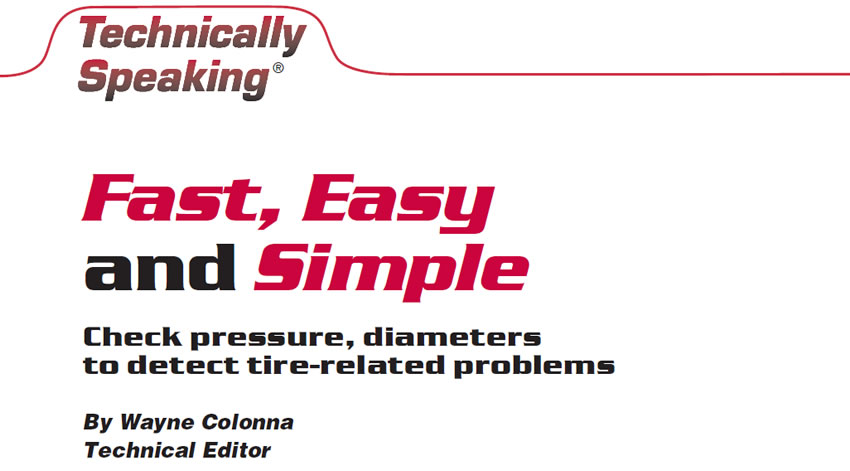
Technically Speaking
- Author Wayne Colonna, Technical Editor
Check pressure, diameters to detect tire-related problems
It may have taken a while for transfer-case technology to catch up with the technology seen in transmissions, but it has, in fact, arrived and it shows no signs of letting up. The Sport Trac, Control Trac II, Active On-Demand 4WD operation and Progressive On-Demand 4WD operation are examples of the types of computer-controlled transfer cases on the road today.
Generally speaking, the basic strategy for most of these transfer cases is to monitor front and rear driveshaft speeds. From this input as well as others, a computer can control four-wheel-drive activity ranging from controlling driveline windup to transferring torque to the front wheels and back to the rear wheels without the driver ever noticing a thing.
And, of course, with the added technology there come new headaches. One such headache is improper tire size on these vehicles. Underinflated or overinflated tires, unevenly worn tires or tires of an incorrect size can cause complaints of wheel hop or crab walking, and continued internal damage to the transfer case. As little as 1⁄16 inch difference in tire size is enough to produce a transfer-case-slip code in some vehicles. In other instances it becomes a hidden problem with no thought ever given to tires as the cause of a drivability complaint or transfer-case damage.
A fast, easy and simple method for detecting this problem is to use a stagger gauge. This tool measures tire diameter while the vehicle is on the ground (see figures 1-3). This is much quicker and far more accurate than trying to measure the circumference of the tire with a tape measure while the wheels are off the ground. This tape-measure method just does not discover the problem as the stagger gauge will – not to mention that you can check all four wheels within minutes.



The benefits of accurate tire measuring can eliminate other problems as well. Unequal tire sizes up front cause the differential in a front-wheel-drive transmission to function as if the vehicle were in a turn while it is going straight. The slower-turning wheel receives the greater amount of torque, which may cause the vehicle to pull toward that wheel, especially during on-throttle maneuvers. Over time, this usually produces a mysterious black powder or soot-type material to be seen floating in the fluid and coating the hard parts. Extended driving under these circumstances will cause premature wear to the differential pinion and side gears along with their washers.
Vehicles that monitor wheel speed for curve-recognition programs also are on the rise. Unequal tire sizes on these vehicles may cause the curve-recognition program to be falsely activated, causing complaints of shift-behavior problems. A simple tire-size check could eliminate days of unnecessary work. It may not be uncommon to see a technician go out to a truck or car with a scan tool and tire gauge before any work begins.














